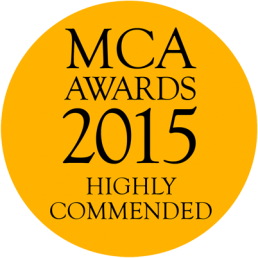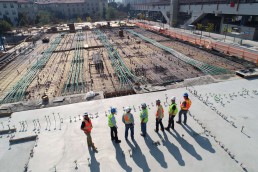Framing the requirements for developing a customer-centric approach and service model
The issue
- With a re-focusing of the organization on energy transition and a strategic objective to grow B2C Mobility and Convenience revenue streams, the current, largely B2B, customer care service model was increasingly being asked to meet needs beyond core capabilities and capacity, putting a strain on service and cost to serve
- With limitations on internal capability, business units have chosen to outsource services, leading to a proliferation of suppliers, models and customer experiences
- No cohesive corporate narrative of the customer promise exists and the internal focus was on fixing service failings to reduce the noise within the organisation
- The need for a future-proof operating model that is aligned to the projected steep growth in the B2C customer base was recognized
- Gaining an appreciation of leading external practices in customer care delivery was considered an essential input to framing the right future state operating model
Solution
- Current state assessment of customer care and customer centricity capabilities against a set of standard dimensions to establish current maturity and points of commonality or difference across business groups
- Established current state maturity of each business against an industry reference benchmark
- Developed design criteria to frame a future operating model and as a reference against which to benchmark external leading practices
- Undertook competitor and cross-sector benchmarking to identify areas of Customer Care differentiation, including desktop research, expert input and interviews with Customer leaders within major organisations (both B2B and B2C).
- Defined the priority levers to drive improved customer-centricity and articulated the linkages between the dimensions
- Developed an initial roadmap to outline how the Customer Care capability should evolve

The results
- Mobilised the senior stakeholders to want to move beyond fixing performance failings in Customer Care to evolving a business-wide Customer-centric operating model
- Delivered a customer centric maturity assessment across three representative businesses against a series of capability levers
- Multi-industry, international benchmarking exercise, highlighting customer-centricity maturity and leading practices
- Identification of priority levers to increase customer centricity maturity and approach options to achieve a viable system model
- Development of a roadmap to move beyond operational fixes to a strategically customer centric approach






CONTACT US TO FIND OUT HOW WE CAN HELP
Infrastructure after Covid-19 – when the mould is broken where do you want to be?
Competition or collaboration? Navigating change in infrastructure after Covid-19
The Covid-19 pandemic has brought about rapid unprecedented change. Companies have responded to imposed restrictions, people have adapted to new ways of working, and the impact on the economy, employment and productivity has been immense.
Businesses face an ever-shifting timescale for recovery but uncertainty on how they need to adapt in the short, medium and longer term.
A commitment to investment in infrastructure
With uncertainty over the shape of economic recovery, the UK government is under increasing pressure to provide answers. The current political agenda is balancing the risk of further outbreaks against the need to kick-start the economy and get people back to work. Infrastructure is a key part of this recovery plan.
As such, we are seeing a range of statements, commitments and emerging policies that::
- Commit to accelerated investment in infrastructure
- Criticise past failings in the delivery of major programmes which have taken too long and cost too much
- Question how other countries can do it so much better than us
- Recognise that we have developed a huge burden of bureaucratic processes
- Challenge the slow adoption of new technologies and innovation
- Reinforce previous goals on climate change and the environment
What does this mean for core infrastructure and regulated industries?
The services and facilities provided by infrastructure and regulated industries are essential to the future growth of the economy. The challenge is how to fairly manage the cost of recovery, which will ultimately be passed onto the consumer. This creates further pressure on the whole system including clients and service providers. Some key questions and considerations include:
For Clients (or sponsors)
- With greater pressure on household budgets, customer expectations on service and value will increase
- Customers will be less tolerant of failure and companies will be under greater scrutiny
- Social and environmental conscience is increasing
- As a result of COVID-19 there will be sustained change in the way people work. But is the full impact fully understood?
- Clients or sponsors will be under increased pressure from the regulators to deliver more for less
- Continuing to stretch existing resources and deliver incremental change will not be enough
- Companies will be driven to develop different and more efficient operating models
For Service Providers
- No longer contractors or consultants but “Service Providers”
- Has traditional contracting had its day and does it really deliver what clients and customers are ultimately looking for?
- Service Providers will be under the greatest pressure to address the higher-level challenges through creating new ways of working or new service offerings
- “Necessity is the mother of invention” – the time of greatest need will drive the greatest change and the more agile companies will be those that win
- Traditional contracts delivered in a traditional way will become an increasing “race to the bottom” based on price with associated increase in failure
Innovation and technology inevitably has a major part to play in addressing the above.
What part should Innovation and Technology play?
Regulated industries are notoriously slow adopters. If this is to change, it is essential to understand the reasons why and break these paradigms.
- Risk of failure is too high either in terms of impact on customers or regulatory action
- Procurement processes are cumbersome and often preclude SMEs/Start-ups
- In reality, Intellectual Property has a very short shelf-life, products are quickly copied
- There is more to be gained from running faster and letting others follow compared to standing still and protecting what you have got
With many organisations facing the same challenges, is there something to be learned from collaboration?
Competition or Collaboration?
Regulation has often been based on the premise of driving or simulating competition. So, what delivers the greatest benefit – organisations collaborating or competing? Many “alliance” delivery models are based on the benefits of collaboration which raises a number of questions:
- Regulated utilities by their nature are often monopolies so why isn’t there far greater collaboration and sharing of ideas?
- Technology/Innovation start-ups often have to prove their concepts several times over to separate clients passing through individual tortuous procurement routes. As a result many collapse before they start. As a wider industry why do separate companies re-invent the same wheel
- Contractors/Service Providers provide similar services to different clients and sectors in the same geographic area. Is there more to be gained from a common approach across sectors?
- If the same Service Provider is providing a service across multiple clients and sectors who is the regulator actually regulating – the Client or The Service Provider?
- If the end service across sectors is a similar service why should there be different regulatory models and different regulatory measures or even different regulators?
Acceleration, adaption and adoption
The COVID-19 pandemic has had an undeniable impact on organisations. Businesses have been forced to adopt a more radical and agile approach in how they adapt to change.
This unprecedented challenge has also created opportunities. Many businesses have failed but some have flourished. In the main, these organisations have embraced a culture of learning from others. They have collaborated and openly shared resources. They have undertaken the accelerated development of complex solutions and executed them with simplicity.
Going forward, significant commitments have been made, expectations are high and pressure on delivery will increase. The challenges will necessitate change and those that move fastest stand to gain the most.
The authors
Get in touch
We help infrastructure organisations to meet challenging targets through strategy, operating model design and transformation.
Contact us to discuss how we can help your organisation.
Want to find out more or meet one of our Infrastructure team? Contact us by email, phone or our web form.
Digital productivity management in infrastructure
The full package: digitising productivity management in infrastructure delivery
Infrastructure owners and construction companies are selecting or developing, and then seeking accelerated implementation and scaling of, their preferred digital productivity management tool(s).
In consideration of the current economic climate, the critical role that Infrastructure investment is set to play in boosting growth has been amplified.
In light of these two factors, it does not feel as though there could be a better time to suggest that if we are going to do the whole ‘digital productivity thing’ in infrastructure and construction… we should do it properly. So, what does ‘doing it properly’ mean? It means that it is time to assess the full spectrum of construction-site productivity management capability areas that can be enhanced through the new or improved application of digital tools. We need the full package.
Unlocking greater efficiencies through digital
Digital enablement has revolutionised productivity and the definition of efficiency norms in other industries. Most notably in Manufacturing industries such as Fast-moving consumer goods (FMCG) where market leaders such as Unilever have reduced material factory waste by more than 40% by digitally enabling end-to-end quality management. (Source: World Economic Forum, How manufacturing can thrive in a digital world and lead a sustainable revolution, January 2020)
Similarly, by 2025 the digital enablement of Logistics has the potential to reduce global carbon emissions by 11%. (Source: World Economic Forum, Digital Transformation of Industries Demystifying Digital and Securing $100 Trillion for Society and Industry by 2025, January 2016) A powerful endorsement of advanced productivity management tools.
The Agriculture industry presents further evidence. Here, as an example, data gathering and historical analysis data-driven decision-making tools are having a transformative impact on crop productivity.
Productivity management in infrastructure however is often driven by manual cost and performance benchmarking processes. Some efficiency gains have been achieved through the successful adoption of Lean methodologies. But the meaningful use of digital tools that enable higher productivity rates will be key to unlocking much greater efficiencies in the construction phases of infrastructure programmes.
There is an entire spectrum of construction site productivity management capability areas that can be enhanced through the application of digital tools. These can be broadly placed into three categories:
- Planning and Collaboration: Ensuring the feasibility of planned activities and improving communications between the site and site-office
- Data gathering: Gathering data on the work accomplished on-site to feed performance/progress metrics
- Data-driven analytics: Collecting historical productivity data on-site to feed data-driven decision making
In pursuit of significant improvement
Organisations tend to focus on the independent application of a discrete digital tool to enable productivity. Most often this means dedicating themselves to a data gathering tool for the purpose of productivity tracking. However, in the pursuit of significant efficiencies it is not sufficient to introduce digitally enabled capability to just one area of the productivity management spectrum. For infrastructure delivery, at the construction site level, a suite of digital tools covering the full range of capabilities (outlined at a high level by the three categories above) is required. Many of the more recently developed tools incorporate data as a service (DaaS) offerings but there is the opportunity to go further. Attributes for productivity information gathered, processed and analysed should adhere to the standards set by data and information frameworks being built by infrastructure owners.
For data generated by any suite of tools, there is the opportunity to actively inform cost and performance benchmarks and subsequently productivity norms for the delivery of work. This applies within the integrated environment for information that programmes, alliances or organisation level data frameworks house.
So how to decide on which digital productivity management tools to work with?
Whether through in-house development or accessing solutions already in play, several factors should be considered, including but certainly not limited to:
- Ease of implementation
- Supply chain buy-in
- Scalability across multiple construction disciplines
Prioritisation frameworks can be designed and applied to rapidly assess an entire landscape of digital productivity management solutions, thoroughly reviewing each through the lenses of standard attributes.
Digital productivity done properly
Individual tools applied in isolation in areas such as productivity tracking can offer benefits. But there is an entire spectrum of on-site productivity management capability that can be enhanced through the application of digital tools. These benefits can be amplified through alignment with the principles for data defined by information frameworks being developed by infrastructure owners. Other industries are demonstrating the scale of productivity benefits available through digital enablement. These are most notable where a complete end-to-end process approach is adopted.
So, if we are going to do the whole ‘digital productivity thing’ in infrastructure and construction… we should do it properly.
The authors
How we can help: Rapid Digital Portfolio Prioritisation
Siloed innovation, functional misalignment and data ‘doing its own thing’ are just a few challenging features of the current congested-frontier of digital transformation.
Applying our bespoke prioritisation framework(s), Curzon Consulting takes 4-6 weeks to rapidly assess an organisation’s entire landscape of digital solutions and initiatives. We thoroughly review each through the lenses of attributes that are orientated around features such as financial benefit, scalability and interoperability.
Get in touch to find out how we can help or arrange a free virtual meeting with award-winning Principal consultant, Edem Eno-Amooquaye.
Want to find out more or meet one of our Infrastructure team? Contact us by email, phone or our web form.
Building organisational capability to drive rapid performance improvement
The issue
- Curzon Consulting were initially engaged to define the programme efficiencies of a public body with a target of £302m for the current investment period
- Alignment of financial targets and scope at scheme level enabled us to provide assurance that the programme will succeed
- It also revealed that there were some critical underlying issues around people and processes that needed practical solutions
- Project configuration and change control were not historically managed well across the programme; project baselines were not agreed/recognised, and redesign often occurred
- There was an embedded Process Compliance culture. People were more concerned on outputs and checklist completion than project outcomes and performance
- There was inconsistency in capabilities and performance among the PM community. Projects seemed to follow contractor’s agenda rather than the client’s
- Project and programme performance was poor and in general all projects were over budget and running behind schedule, costing millions to the Programme
What we did
- Assessment of the management capability to implement change and mobilise the workforce
- Analysis and prioritisation of the project management capability gaps for current and future operating model
- Project lifecycle process mapping to understand gaps, levers and weak points
- Communication of spend profiles to focus on project high cost and critical path activities
- Reinforcement of the role of the PM in the operating model and the support available from specialist functions
- Development of an on-the-job training approach to deliver immediate results and simultaneously start to address the capability challenges for long term results
- Focus on people behaviours around process adherence and promote and install an intense focus on project performance to achieve the Programme’s objectives
- Set performance indicators that were aligned towards outcomes, rather than outputs, to bring performance visibility

The results
- Established a holistic view for an integrated project configuration and control framework. Programme has visibility on project progress and Project Manager development
- Increased alignment to project configuration and adherence to the baseline
- Created and installed a clear set of impactful project cost, schedule and risk related metrics. These are now being used for project performance management
- Improved forecast stability and reduced risk exposure






CONTACT US TO FIND OUT HOW WE CAN HELP
Evaluating structural entity options for a new arm of government transport body
The issue
- Embryonic consulting business established one year ago by a local government body responsible for transport, to monetise and deploy in-house specialist experience
- Consulting business deeply embedded in one of the organisation’s existing holding companies
- Business had not yet established the appropriate frameworks for managing revenue, project delivery, Intellectual Property and assets
- The client wanted to review the optimal entity structure for its Consulting business in order to better drive commerciality
- Strong desire to set up the Consulting business using an entity structure that fostered commerciality and leveraged in-house resources in the most optimal way
- Clear focus on building a profitable revenue funnel, self-financed growth, better IP and asset monetization, capitalisation on tax benefits, simplified and robust governance and transparent risk management
- Aim to start competing for, or partnering with big organisations to, deliver Advisory, IP and Operations & Maintenance contracts
What we did
- Conducted an exhaustive benchmarking exercise to provide the client with insights into how other service utility organisations have established successful Consulting businesses
- Defined a robust set of design principles and considerations for reference throughout the operating model design exercise
- Identified and shortlisted a set of structural options following a complete option evaluation in terms of feasibility and suitability
- Conducted end-to-end scenario testing, using carefully selected in-flight example bids, across the shortlisted structural options
- Refined the final structural model based on outputs of the scenario testing, for proposing to the client’s Finance Committee.

The results
- A benchmarking report, providing a crystallised view of the comparator landscape, including assessment of comparator suitability, and a summary of key insights and recommendations
- A report outlining the full assessment of entity options against a set of robust criteria and the rationale for down-selection
- A recommended structural model, clearly outlining three distinct entity options catering to the distinct requirements of each activity stream
- A high-level timeline illustrating implementation options and a trajectory of maturity
- A concise, crisp report containing key messaging for the Client to socialise to key stakeholders in order to secure Board approval
An award-winning team






CONTACT US TO FIND OUT HOW WE CAN HELP
Driving performance in public sector infrastructure
Nigel Brannan highlights the importance of mastering the basics for a performance focused infrastructure organisation.
The performance challenge
Public sector organisations have long recognised the need to be more outcome and performance focused. While signalling the right intent, many struggle to translate desired outcomes into tangible outputs from their employees and suppliers.
A general ethos of reducing cost above all else compounds this challenge. Furthermore, the organisations often outsource the problem to a supply chain that is increasingly fragmented and under pressure to bid for contracts at very low margins. Suppliers then hope to make money from variations to the original contract that either were not or could not be specified up front, often taking advantage of their client’s poor planning, organisation or decision making.
The supply chain
Partnerships and collaborations are often touted as mechanisms for delivery assurance and improved performance but there are still significant inconsistencies in their effectiveness and practicality. The biggest challenge is usually to align organisations around incentives, which often involves increasing risk in exchange for higher profit, and ensuring that all parties are focused and organised around a common outcome. This is easier said than done.
For major, complex infrastructure projects, it extends beyond the physical construction effort to incorporate the planning and design phases. The public and political outcry at the spiralling cost of many high-profile programmes, or fear that they will overspend significantly, comes from a perceived inability to nail critical decisions, and plan and design in a reasonable timeframe. There are many political reasons why the champions of HS2, Hinckley Point C and Heathrow’s third runway continue to say those projects will deliver for the quoted costs, but the odds are that they will not.
The role of innovation
Innovation and digitisation play important roles in improving the performance of infrastructure organisations. Much of our work involves implementing innovation and digital strategies, but we do it through the lens of following the money. That means mastering the basics of productivity and performance, which starts with knowing what your core success measures are and how you are performing. In infrastructure delivery, you need right to left planning. This means working backwards from the answer on what needs to be in place and by when to hit key milestones and performance outcomes.
The move towards a performance management culture
Curzon & Company is currently partnering with a major public sector infrastructure client to move the organisation towards a performance management culture.
There are three stages in addressing the performance challenge –
Scan, Focus and Act:
- Scan establishes the baseline, trajectory and key drivers of performance. One critical output is a single version of the truth across scope, activity, cost and risk
- Focus is about prioritisation and channelling effort to where it has most impact. Major wins often come from an emphasis on looking forwards and addressing future risks rather than reporting historical performance.
- Act means actually doing things differently. It involves engaging the organisation and their partners at programme and project level to adopt new ways of working. Common measures, good information and ‘heartbeat’ disciplines get results.
None of this is rocket science, but it is remarkable how many organisations struggle to put it into practice.
The benefits
Our client now has transparency of previously hidden efficiencies, providing them and their regulator with the confidence that they are meeting their commitments. They can manage the affordability of the programme proactively – a key benefit where scope requirements evolve over time.
They are offsetting build cost risks by focusing on high-cost elements with standardised product design and productivity benchmarks. Most importantly, they are deploying tools and disciplines at project site level where success (or failure) is delivered.
The successful partnership between the client team and Curzon continues, helping to strengthen the foundations as the client migrates towards a new operating model.

This article originally featured in Raconteur, March 2019
About the author

Nigel Brannan
I lead Infrastructure at Curzon Consulting
I've over 30 years of consulting experience leading major transformation programmes and strategy assignments with major utilities, transport and civil engineering organisations.
CONTACT US TO FIND OUT HOW WE CAN HELP
Chairman's Masterclass: "Mind The Gap... Delivering a vital public service in politicised arenas"
Event: "Mind The Gap - Delivering a vital public service in politicised arenas"
23 May 2018
On 23 May 2018 we are joined by Sir Peter Hendy, Chairman of Network Rail.
Sir Peter will be sharing reflections and lessons learned from a fascinating career spent immersed in iconic UK infrastructure organisations.

Mind The Gap is the latest event in our Chairman’s Masterclass Dinner series, providing UK business leaders with insight for over a decade.
About the author


















